Inside the Tank | Forbidden Root’s BJ Pichman
With so many breweries operating in Chicago, the ability to stand out is critical. Forbidden Root has been brewing beer for a couple of years now, and in February of this year they opened up a beautiful new tap room in West Town. The brewery uses botanics in its beers such as ginger, cherry stems, black walnuts and licorice to create unique flavor profiles.
The men behind Forbidden Root are some very well known names in Chicago brewing. Robert Finkel, Randy Moser and Head Brewer BJ Pichman took botanic brewing from an idea to a full-blown brewery. I went to Forbidden Root and sat down with Pichman to talk about his road to brewing and how Forbidden Root has evolved over the past two years.
Before you got into brewing you were in data analysis and project management. How did you get into beer and the brewing scene?
I was in the market research world for 12 years. During that time a friend of mine introduced me to home brewing. I joined the Chicago Beer Society and was a regular at their Thursday meetings. Like a lot of homebrewers, I had that dream of opening up my own brewery… but I was married, had a kid, and had another one on the way, so it wasn’t in the cards for me to drop everything and start a brewery. I wasn’t going to go to my family and say “Hey, I’m not going to make any money for a couple of years — are you ok with that?”
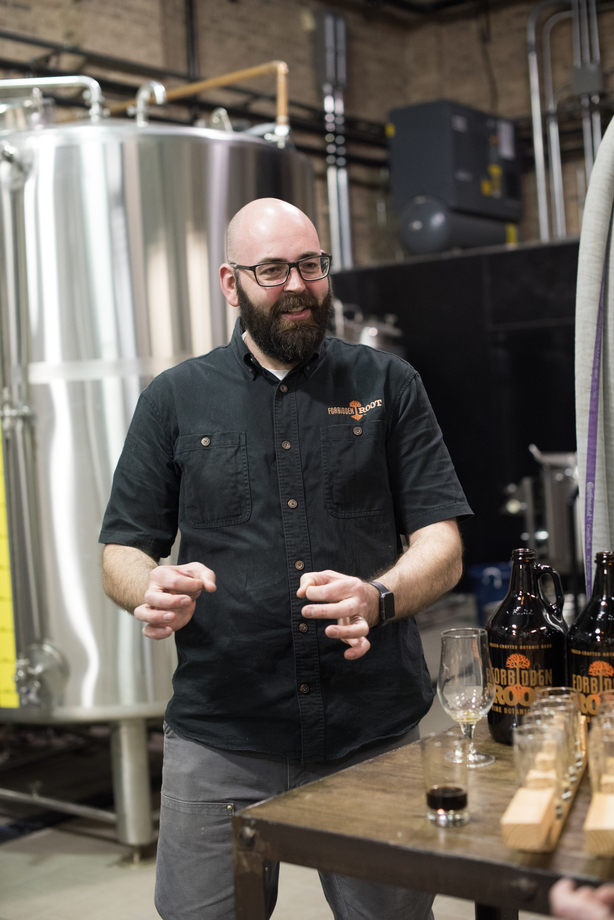
I got laid off and during my fun-employment and when I was getting severance and unemployment, I reached out and started hanging out at breweries. I’d go to breweries and do the odd jobs no one else wanted to do. It was great to see all the blood sweat and tears that went into brewing. It was infectious but the reality was that I could never afford to make that jump. It wasn’t going to pay the bills.
During that time I was also taking pictures and I was doing an event over at 5 Rabbit that was a beer dinner with a Top Chef contestant at the time. Randy (Moser) was there and at the end of the night he asked me if I’d like to brew some pilot batches for a project he was working on.
Of course I said yes — it sounded awesome. He gave me a phone number and told me to give Robert a call. He’s the guy who was starting this thing up. Randy was very hush-hush about it and wouldn’t tell me the details of the project. The next day, or something, I called Robert and he told me he was trying to brew a root beer beer. It wasn’t an alcoholic root beer — this predates Not Your Father’s Root Beer and all those other alcoholic root beers. He started giving me all the information about it and as a craft beer enthusiast and a home brewer, I thought it sounded ridiculous. It didn’t sound right to me — a root beer beer? But I was up for the challenge.
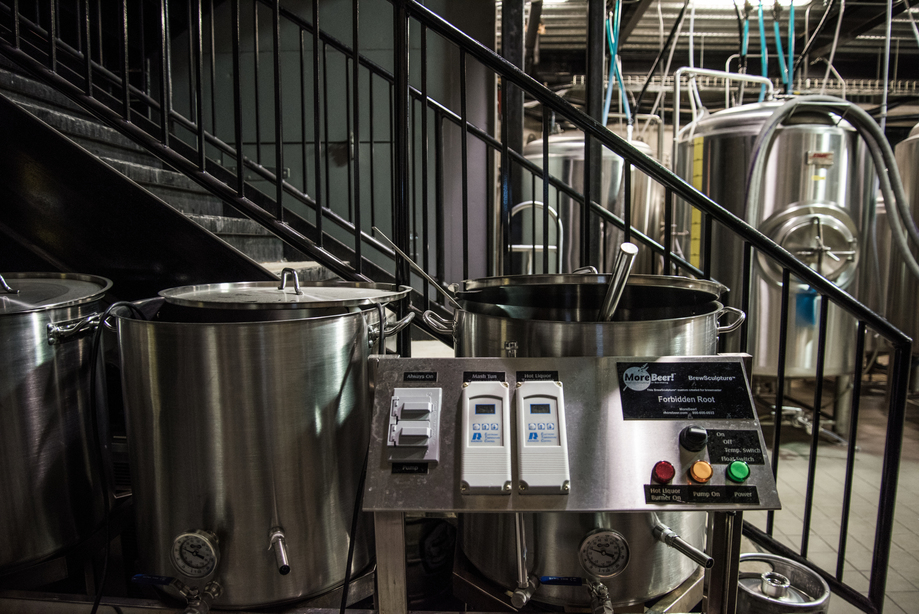
I eventually got another job doing project management — I was there for about a year — and on the side I was doing this project with Robert. It didn’t work out at that company, and right at the end of that time we were getting more serious about turning this “root beer beer” into a full blown botanical beer concept. It was going somewhere and it had legs.
From there the brewpub was next?
Robert moves fast, he’s very driven, and our next goal was to get a brewpub. We started shopping for real estate. I live in West Town and we started looking for property where we could have the brewery. We wanted to be community-based, we didn’t want to be in an industrial park. We wanted to be somewhere that the community could be a part of it. We shopped around and looked at 12-14 places. I drove by this building for years and never knew it was here. This was the top of my list of places to be. I couldn’t think of a better place than Ukrainian Village or West Town to have a brewpub.
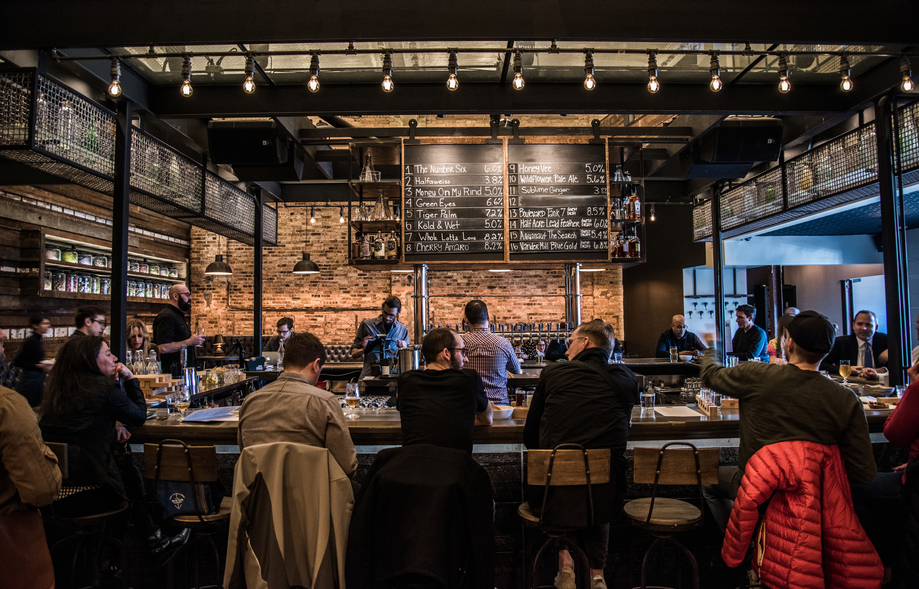
Talk about the process to get the brewpub open.
In 2014 we started brewing commercially and in 2016 we finally opened the brewpub. We were contract brewing out of 5 Rabbit before that. It was January or February of 2014 when we tried to secure this place. As it turns out it was not easily had.
There were a lot of hoops we had to jump through. There was a liquor moratorium on the street, we had to change the zoning and that turned out to not be as simple as I thought. I thought everyone would have been thrilled to have us move in, but we had an uphill battle.
Thankfully, the community rallied together and really showed up in force at a town hall on a freezing cold day in January. There was a poll taken if they were yes, no, or maybe for the brewery. Out of the 330 or so people in attendance only six said no. We ended up breaking group 12 months later in January 2015.
How important was having the brewpub open up for the future of the brewery?
Personally I think it was absolutely the number one priority, the most important thing we could ever do. We found ourselves in that first year or so without the brewpub, and it’s hard to get through all that noise and all that other selection to reach consumers when they’re in a liquor store. If someone is walking through the aisles of a liquor store and they see 150 other beers there, which one do you choose?
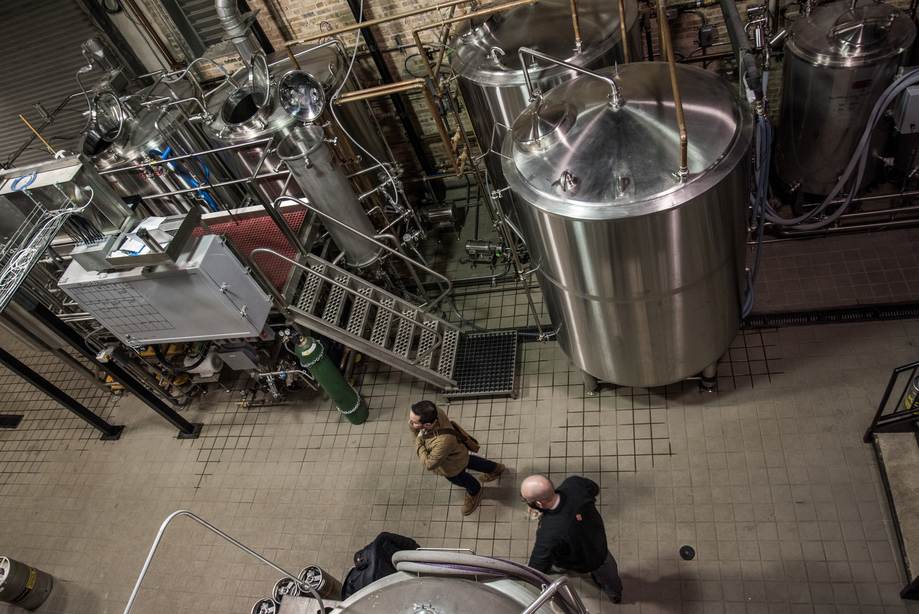
We were doing every festival, tastings, in-store demos to have people try the beer. Once they tried it, they had an “ah-ha” moment and saw that we were doing something different. We’re not your typical beer that is out there. Having people come and experience the beer and see it in context for what we are trying to do has been great.
How did the idea of doing botanic beers come up?
The root beer beer took a lot of time. It took 18 months to figure out and get it right, and during that time I don’t know if it was fatigue or what, but we wanted to work on something else. Sublime Ginger came up and then Shady Character was up next. It became a bigger thing. Why do just one beer?
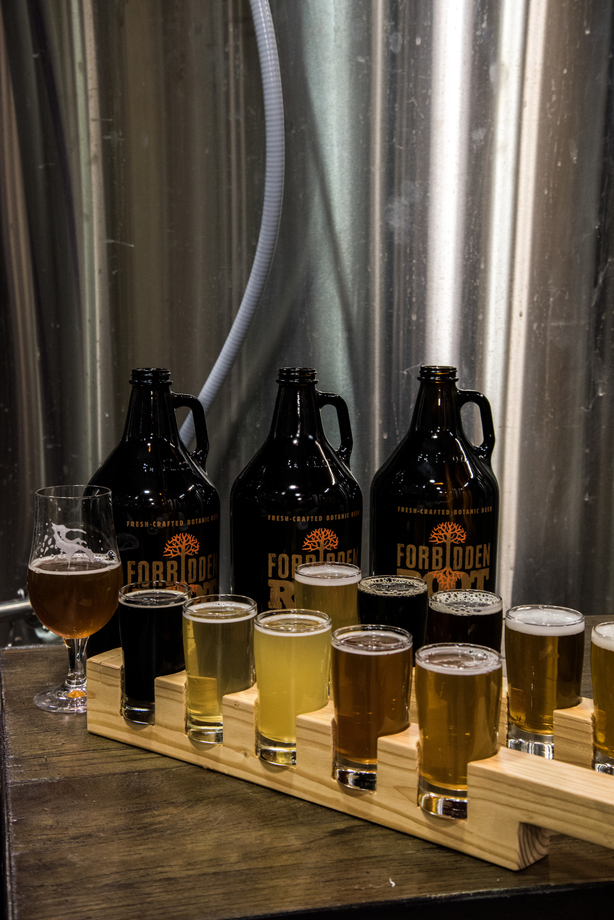
Why not just do an IPA or a Lager?
Randy and Robert had a lot to do with that. The best quote I heard from them was: “If you don’t have anything to add to the conversation, why bother talking over everyone else?” That’s what I thought, too. When I had those dreams of opening up a brewery, I thought “What could I do differently than somebody else?” When I started home brewing, I wasn’t the guy trying to nail the classic styles. I was brewing the beer styles that I couldn’t get. I wasn’t trying to brew the same IPA that everyone else was.
Define a botanic.
Herbs, roots, and spices. Anything pulled from the earth — including hops. That’s one common misconception that people have. They think we don’t brew with hops — that’s incorrect. Every beer we brew has hops in it otherwise it wouldn’t be called a beer. It’s not just the ingredients. There’s a lot of thought about the ingredient and the flavor profiles and how they’ll work in a beer and what the main idea is.
Sometimes we’ll work backwards. We’ll have these amazing ingredients that we’ll try and we’ll design a beer around the ingredient. We won’t decide to brew an IPA and throw an ingredient in it. We think about how we can best showcase an ingredient, it’s kind of going through the process backwards. It results in something that tastes different. We think about the ingredients and the flavor profile, and then we try to marry the two.
Where do you find your botanics?
I used to think I was resourceful until I met Robert. He will go to the far ends of the earth to get different ingredients and bring them to the table. We would have meetings where we would sit down at the table and Robert would unload this cache of things he had gotten from all over the world. We would go through them and try them all and create yes, no, maybe piles. Some things would be good, awful, fantastic or interesting.
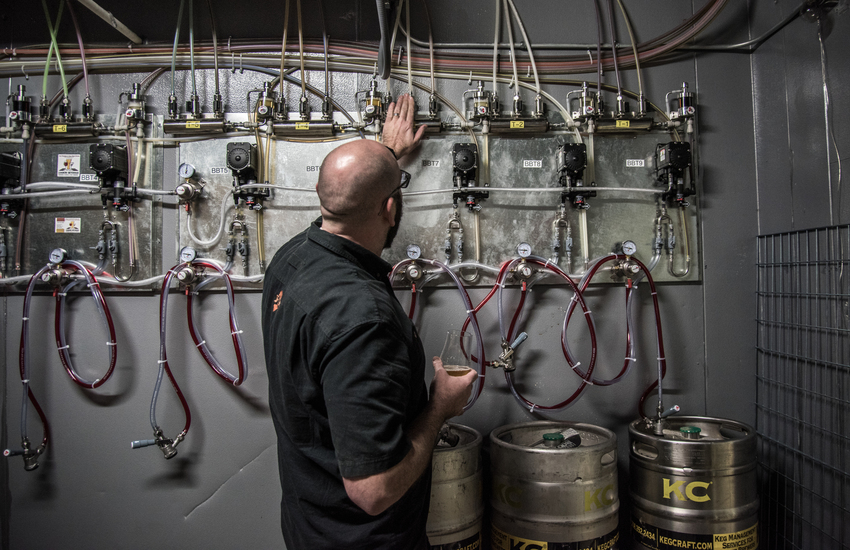
What’s the craziest botanic you’ve used in beer?
A weird one that got thrown in the mix were cherry stems. Cherry stems were really surprising — the dried stems of cherries. You’d think they’d be a complete waste but they turned out to have a lot of flavor. That was one thing that was very surprising. We get these interesting ingredients but we have to figure out how to use them. We have to figure out the flavor and then how to get the flavor out of them. The flavor isn’t always good.
Brewpubs are becoming a big trend. Forbidden Root has some highly acclaimed food. Why is the food trend becoming so popular?
Location has a lot to do with it. If we were a production brewing in an industrial park we could get around that. We could have a food truck come out and have food that way. Being where we are, in West Town, in the city, and having a beautiful space — food is something you have to have.
Another reason to have food is that it gets people in the door and it gets them to stay. It also adds something to the community. We didn’t necessarily want to have this huge tap room and just serve a ton of beer.
We also found out that our beer pairs really well with food. During that two years before the pub was open we did a lot of beer dinners. Chefs were super excited with pairing our beers with food. It wasn’t a big leap to figure out we should have food.
You have a proprietary hop from Germany you’re using in your Jacob IPA. How did that happen?
We already ran through the first batch of it. It [Jacob IPA] was our best selling beer by far. It went faster than I anticipated. It’s an interesting story about the hop.
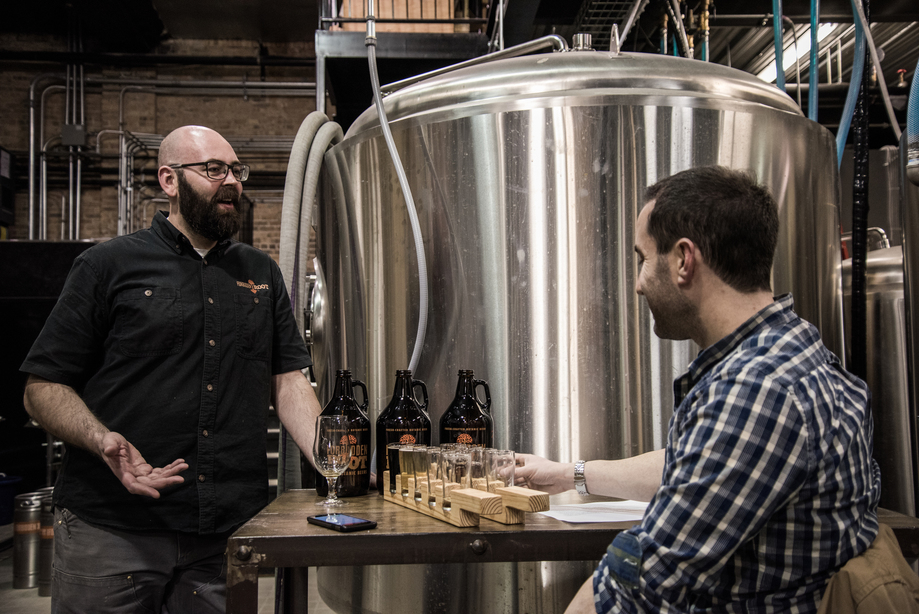
We work with a hop farmer for our other hops and he introduced us to this gentleman in Germany who was a retired hop farmer. He was in his 80s and he planted some hops in his backyard, literally his backyard.
Our mutual friend was out there one day and picked these hops and smelled them and couldn’t believe what he had. As fortune would have it, we had just talked with him about trying to find something different, something that we can call our own, and he brought it forward to us. The next thing you know we had the entire crop — all 198 pounds of it — which is nothing. This is going to be a pretty limited run, unfortunately. It’s a really interesting hop. Nobody outside of the farmer had every put it in beer. It was a big surprise.
Being a botanic brewer, it separates you in Chicago from the other breweries. With so many breweries in Chicago, how important was it for you to be different?
Obviously you want to be the one that more people go to than others. In order to be successful you have to have people coming in your door. I’ll be honest with you, I don’t think people really care about being better than others. We have what we think is a really fun idea, and we’re just going with it down this road to see what happens.
You don’t get the hype of 3 Floyd’s and Pipeworks overnight. We haven’t hit our stride yet. You have to earn it now — you can’t fake it. You have to do something truly different and it has to be something that people like. A lot of brewers brew something because they like it. That’s great and you’d be an awesome home brewer. If everyone else likes it, then you’d be a great production brewer or brewery owner. But if no one else likes it… then you should stick to home brewing. You can’t have too much of an ego.
You have to make sure other people like your beer. I want to brew beers that are different, that I like and that everyone else likes. We’re doing our own thing here. We could go crazy and brew with the wackiest ingredient out there and the beer would taste like garbage. Who cares if we were the first person to ever use this ingredient? It doesn’t matter unless it clicks with people. I’m all about giving people the best experience possible.
What can pop the craft beer bubble?
I have a long answer for this. I don’t want to get all dooms day on you, but I feel that the big guys buying up the craft brewers — especially when you see the huge money being thrown around. You have to think about why that big company wouldn’t take that billion dollars and just launch its own brand? They could do that for a third or a quarter of that money. Why aren’t they doing it?
It comes down to the culture. It starts local and people get behind the local guy. The local movement builds, and people get very excited about it and support it. Assuming the brewer does a good job and brews good beer, and markets it well, then it grows and grows and it builds from something.
A big brewer can’t spin something out that has “culture”. People will see right through that. It’s very brand-centric (as much as people hate to admit it.) People really buy into brands for a lot of reasons. There are a lot of reasons to not buy into the big common brand. That’s why those big brewers can’t take that $250 million and spin off a beer. Everyone will see the bullshit. They’ll see that big brewer branching off.
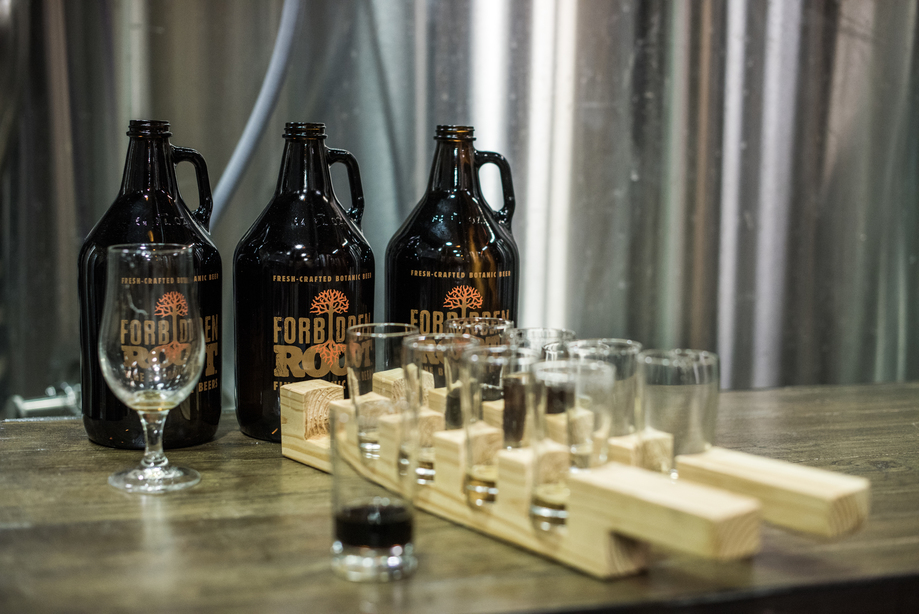
If this keeps happening, I think people will get gun shy. I don’t know if people will be as excited to jump on the craft beer wagon. Will people be as excited to get growlers of craft beer, put the brewery’s sticker on their bike, and talk about the beer? I worry that people will become “over” craft beer and that worries me more than anything.
You maybe just answered my next question. So you don’t see it as a good thing for the craft beer industry when these large companies to buy these small breweries?
Not necessarily for the industry. I don’t think it’s a bad thing for the actual brewery. Beer isn’t going to get worse for right now. Overall, I think the movements and the culture of craft beer could be damaged by it. I’m not going to speak ill-will towards anyone who’s taking the opportunity to capitalize on their hard work. I’m not going to say that beer is going to be shit now because someone else owns it — I don’t think that’s the case at all.
What’s your favorite Forbidden Root beer, favorite style, and if you’re not drinking Forbidden Root… what are you drinking?
My favorite Forbidden Root beer right now is the Jacob IPA. I’m a seasonal drinker. So if it’s a 100 degrees out, I’ll enjoy a nice berliner weisse or something nice and refreshing. It has to be something interesting.
When I’m not drinking Forbidden Root, I’ll drink somebody’s special release IPA or a dressed Hamm’s. Pub Royale turned me onto that. They take a can of Hamm’s and put hot sauce, seasoned salt and lime on it and that’s a dressed Hamm’s. It’s probably one of my favorite things.
What does the future hold for Forbidden Root?
Hopefully a ton of people coming in the door, trying our beer. Our brewpub is our Willy Wonka land where we get to try new things, put them in people’s mouths and see what they think of it.
I think that’s one of the coolest things about being in the beer industry and being a pub brewer. It’s so badass that you get to brew the beer… and then walk up to the front and watch people drink it. They’re in your environment, they’re in your home, and it’s in context. It’s awesome to see their reaction and see what works and what doesn’t work. You get a lot of instant feedback — and also instant gratification — when you see people enjoying your beer.
MIKE ZOLLER IS THE CHICAGO EDITOR FOR PORCHDRINKING.COM. FOLLOW HIM ON INSTAGRAM: @CHICAGOBEER AND PORCHDRINKING CHICAGO’S TWITTER FEED: @PORCHDRINKCHI


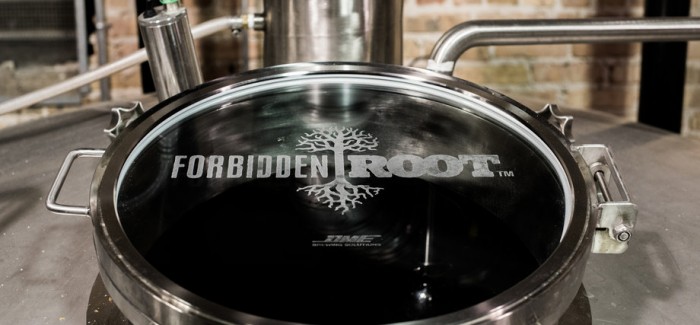
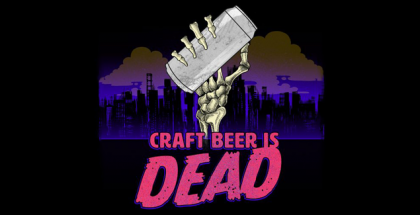
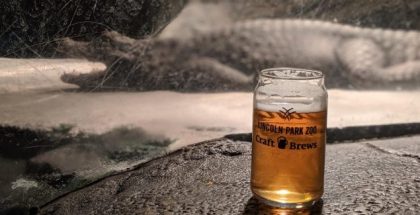
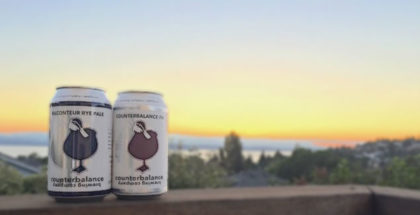
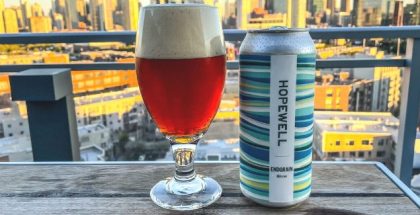
Submit a Comment